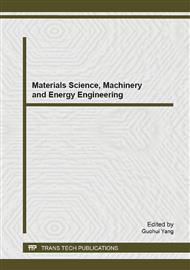[1]
V. Hearnden, V. Sankar, K. Hull, D.V. Juras, M. Greenberg, A.R. Kerr, P.B. Lockhart, L.L. Patton, S. Porter and M.H. Thornhill. Adv. Drug Deliv. Rev. Vol. 64 (2012), pp.16-28.
DOI: 10.1016/j.addr.2011.02.008
Google Scholar
[2]
P.J. Sinko: Martin's physical pharmacy and pharmaceutical sciences : physical chemical and biopharmaceutical principle in the pharmaceutical sciences (Lippincott Williams & Wilkins, Philadelphia 2011).
Google Scholar
[3]
F.A. Mohammed and H. Khedr. Drug Dev. Ind. Pharm. Vol. 29 (2003), pp.321-337.
Google Scholar
[4]
G. Amasya, S.Y. Karavana, T. Sen, E. Balogu and N. Tarimci. Turk. J. Pharm. Sci. Vol. 9 (2012), pp.1-12.
Google Scholar
[5]
M. Innocenti, G. Moscatelli and S. Lopez. J. Pain Symptom Manage. Vol. 24 ( 2002), pp.456-457.
Google Scholar
[6]
M.A. Attia and H.Y. El Badawy. IJDD. Vol. 2 (2010), pp.314-321.
Google Scholar
[7]
Y. Sudhakar, K. Kuotsu and A.K. Bandyopadhyay. J. Control. Release Vol. 114 (2006), pp.15-40.
Google Scholar
[8]
G. Dumortier, J.L. Grossiord, F. Agnely and J.C. Chaumeil. Pharm. Res. Vol. 23 (2006), pp.2709-2728.
DOI: 10.1007/s11095-006-9104-4
Google Scholar
[9]
N. Salamat-Miller, M. Chittchang and T.P. Johnston. Adv. Drug Deliv. Rev. Vol. 57 (2005), pp.1666-1691.
Google Scholar
[10]
P.D. Marsh and M.V. Martin. Oral microbiology (Elsevier, Edinburgh 2009).
Google Scholar
[11]
M. Ishida, N. Nambu and T. Nagai. Chem. Pharm. Bull. Vol. 31 (1983), pp.4561-4564.
Google Scholar
[12]
I. Diaz-del Consuelo, Y. Jacques, G. -P. Pizzolato, R.H. Guy and F. Falson. Arch. Oral Biol. Vol. 50 (2005), pp.981-987.
DOI: 10.1016/j.archoralbio.2005.04.008
Google Scholar
[13]
E.S. El-Leithy, D.S. Shaker, M.K. Ghorab and R.S. Abdel-Rashid. AAPS Pharm. Sci. Tech. Vol. 11 (2010), pp.1695-1702.
DOI: 10.1208/s12249-010-9544-3
Google Scholar
[14]
R.Y. Han, J.Y. Fang, K.C. Sung and O.Y. Hu. Int. J. Pharm. Vol. 177 (1999), pp.201-209.
Google Scholar
[15]
L. Perioli, V. Ambrogi, D. Rubini, S. Giovagnoli, M. Ricci, P. Blasi and C. Rossi. J. Control. Release. Vol. 95 (2004), pp.521-533.
DOI: 10.1016/j.jconrel.2003.12.018
Google Scholar
[16]
V.F. Patel, F. Liu and M.B. Brown. J. Control. Release. Vol. 153 (2011), pp.106-116.
Google Scholar
[17]
N.A. Peppas and P.A. Buri, J. Control. Release. Vol. 2 (1985), pp.257-275.
Google Scholar
[18]
D. Solomonidou, K. Cremer, M. Krumme and J. Kreuter. J. Biomater. Sci. Polym. Ed. Vol. 12 (2001), pp.1191-1205.
Google Scholar
[19]
G.P. Andrews, T.P. Laverty and D.S. Jones. Eur. J. Pharm. Biopharm. Vol. 71 (2009), pp.505-518.
Google Scholar
[20]
R. Shaikh, T. Singh, M. Garland, A. Woolfson and R. Donnelly. J. Pharm. Bioallied Sci. Vol. 3 (2011), pp.89-100.
Google Scholar
[21]
K. Tamine, T. Ono, K. Hori, J. Kondoh, S. Hamanaka and Y. Maeda. J. Dent. Res. Vol. 89 (2010), pp.1097-1101.
DOI: 10.1177/0022034510370801
Google Scholar


